The southern part of Patagonia, including Torres del Paine and local estancias (ranches) like Laguna Amarga, are home to the largest population of wild Pumas in the world. Stalking wild Pumas in Patagonia is an amazing experience, and was one of the highlights of our trip.
Studies conducted since 2008 in Chile’s Aysén region of Patagonia National Park show that there is a density of as much as 3.5 Pumas for every 25,000 acres (10,000 hectares). Previously adversaries, the Pumas and ranchers now exist synergistically. The ranchers realized the tremendous tourism value of the wild Pumas in Patagonia and changed from a strategy of hunting the Pumas to sharing the estancia and protecting their sheep herds with guard dogs. Now the Pumas thrive on a diet primarily of the local Guanaco population. The Guanaco is a a camelid (family including camels, llamas, guanacos, alpacas, and several others) native to South America, most closely related to the llama.
We were lucky to be hosted on Laguna Amarga by a very experienced team of local guides. Far South Expeditions has a tremendous group of guides, and has been in business leading tours of Patagonia and the surrounding areas for more than 25 years. Our primary guide, Susanne Widmer has a Master’s degree in Geology, and an amazing amount of knowledge about Patagonia, Torres del Paine, and Tierra del Fuego. She did a masterful job of scheduling and leading all of our events both in the park and on the estancia, and ensured all of our travel needs were identified ahead of time and met graciously. She was joined in the Puma portion of our itinerary (last 4 days) by Marcial Urbina (Conexion Photo Patagonia), perhaps Southern Chile’s most recognized and experienced Puma tracker. Marcial specializes in tracking wild pumas in Patagonia, and led our group to up close, personal viewing of eleven pumas in four days of tracking. We felt extremely lucky to see Pumas in a variety of activities, including stalking, a mother with two cubs, and an amazing five Pumas gathered around a Guanaco carcass.
The first Puma we saw was a complete surprise. The female Puma Rupestre, who is somewhat of a celebrity due to her appearance with her four cubs on an episode of the documentary Predator (Predators Puma episode). Rupestre made her first appearance of our trip in the campground near Laguna Azul (Blue Lagoon) in Torres del Paine national park, very near the restrooms. We were at the lagoon for some landscape photography, so her visit was a complete surprise and a bonus for the trip.
Several days later, we began the Puma tracking portion of our itinerary with an afternoon visit to Laguna Amarga ranch. We met up with our guide Marcial, and he quickly took us to an overlook where we saw the female Puma called Coirón guarding her recently killed Guanaco. This was very interesting to observe, as when Pumas have a fresh kill they cover it with dirt and brush to hide it from other predators, and then stay nearby to guard it and feed on it for as much as 4-5 days.
Our second day of Puma tracking turned out to be a full day. The ranch limits the number of photographers on the property by dividing the day into morning and afternoon sessions. If the session is going particularly well, the guide can choose to extend the morning session by several hours instead of leaving to come back for the afternoon session. We were fortunate to spend the extended session closely observing a female named Ginger as she lounged around and conserved her energy. This turned out to be a major part of Puma tracking, as the big cats spend a lot of time resting in between major events like hunting. This can often result in several hours of up close observation, but without a lot of major activity.
The third day of tracking also resulted in a full day. But, this time Marcial had found us a mother named Dania and her two cubs.
It was an amazing experience watching the three Pumas interact.
Later, we were fortunate to watch Dania as she left the cubs home alone and went out hunting for lunch. She stalked a lone Guanaco for nearly an hour, crossing a road, a fence, and a large field without being detected.
But then, unfortunately for her a nearby Guanaco was standing sentinel behind her and she didn’t see it.
So then, just as she was closing on her intended prey the guard Guanaco sounded the alarm. Their alarm is a very strange sound, our guide compared it to a combination of a pig snorting and a horse braying. But, whatever the sound, the result is always every Guanaco in range running for cover. It was sad to watch her miss, and then make the long walk back to her cubs without lunch.
The last day of our wild Pumas in Patagonia itinerary was supposed to be a short morning session. But, from the time we met Marcial in the early morning we could feel that we were onto something exciting. Marcial told us we were going back to the kill from Day 1. But now there were not one but four Pumas in the area. The kill had been taken over by a large male Puma called Virgo. The was especially exciting, because the males are normally much harder to find and view.
Virgo was jealously guarding the carcass
surrounded by Ginger,
Rupestre,
and a beautiful gray female called Escarcha (Frost).
We started moving toward the kill along a ridgeline and were surprised to find that almost half of our group had walked right by a fourth Puma (Coirón) who was sleeping underneath a bush along our trail. Coirón, you’ll remember, was the Puma initially responsibly for taking down the Guanaco. I’m not sure who was more surprised, us or Coirón when she stood up in the middle of our group. But, it was a testimony to how well they are naturally camouflaged. The photo below shows four of the five Pumas and how they were arranged.
We extended our morning session and stayed to watch as the five Pumas rested around the carcass. Several times the various females would make their presence known with angry glances in Virgo’s direction. Then, just before we had to leave Escarcha began moving toward the kill. She would slink forward several paces, resulting in Virgo running over to attack her. When he did, she would roll over on her back in a submissive position until he lost interest. This process went on five or six times, until Escarcha was close enough to the carcass to begin eating. This appeared to frustrate Virgo, but ultimately he gave up and began sharing his meal with her. It was a fascinating window into Puma social dynamics.
This was an amazing adventure, and we highly recommend stalking wild Pumas in Patagonia.


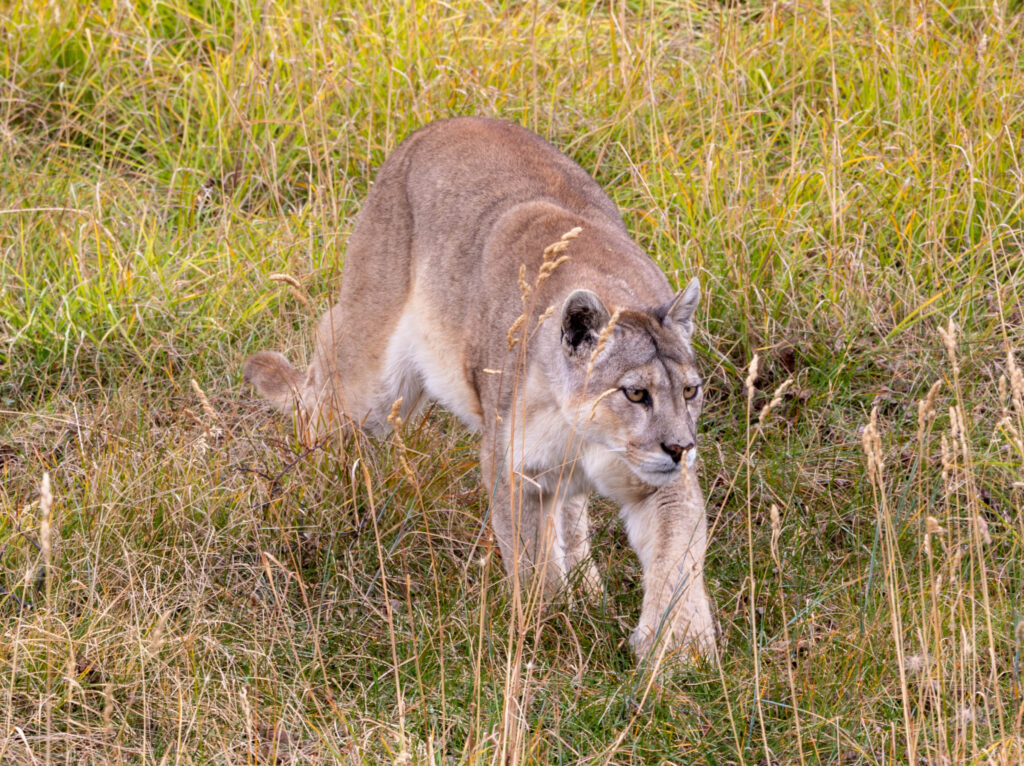
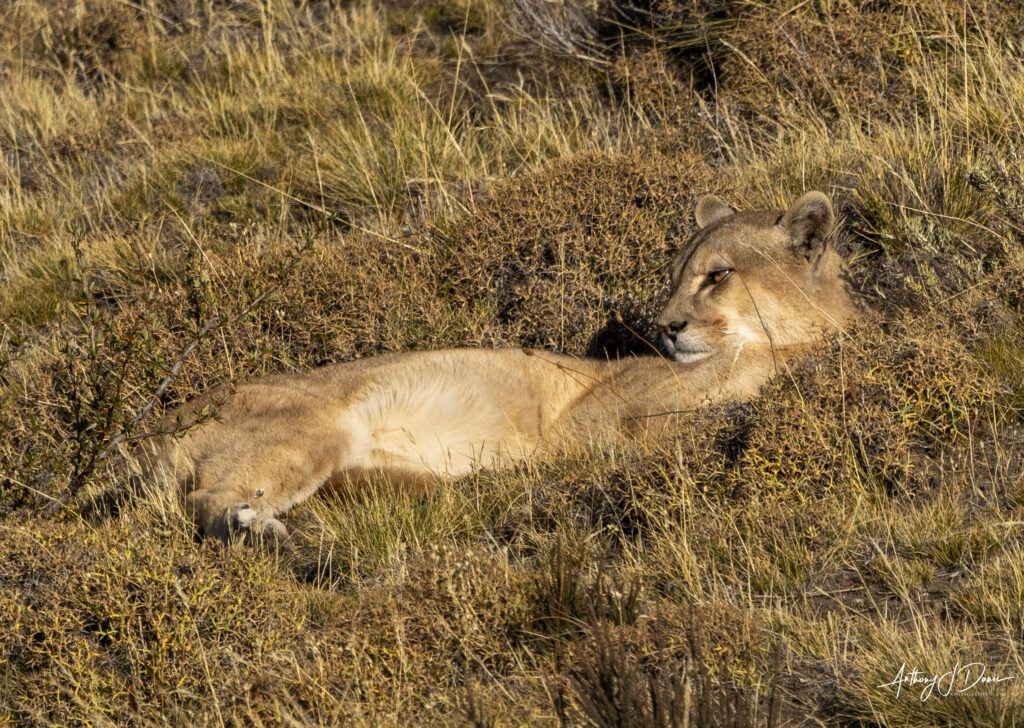


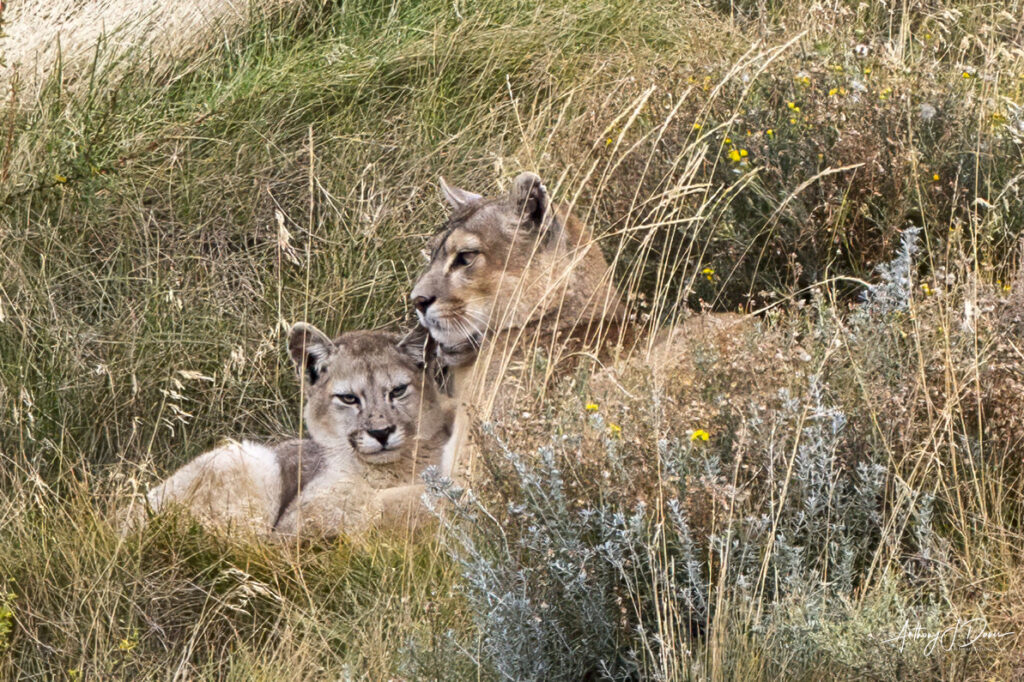
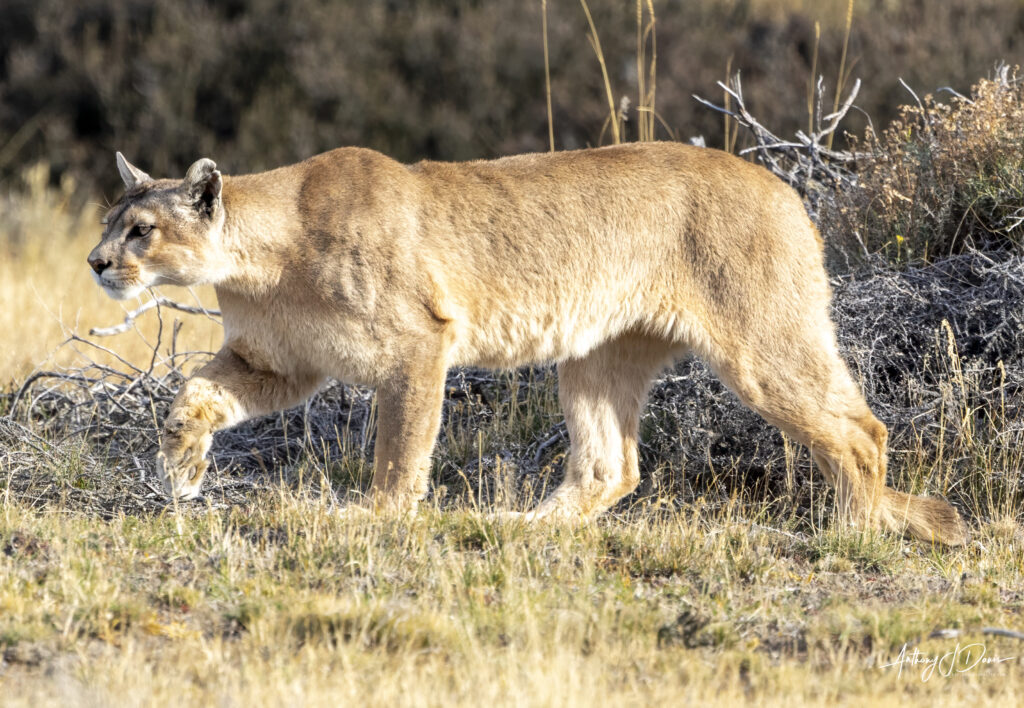
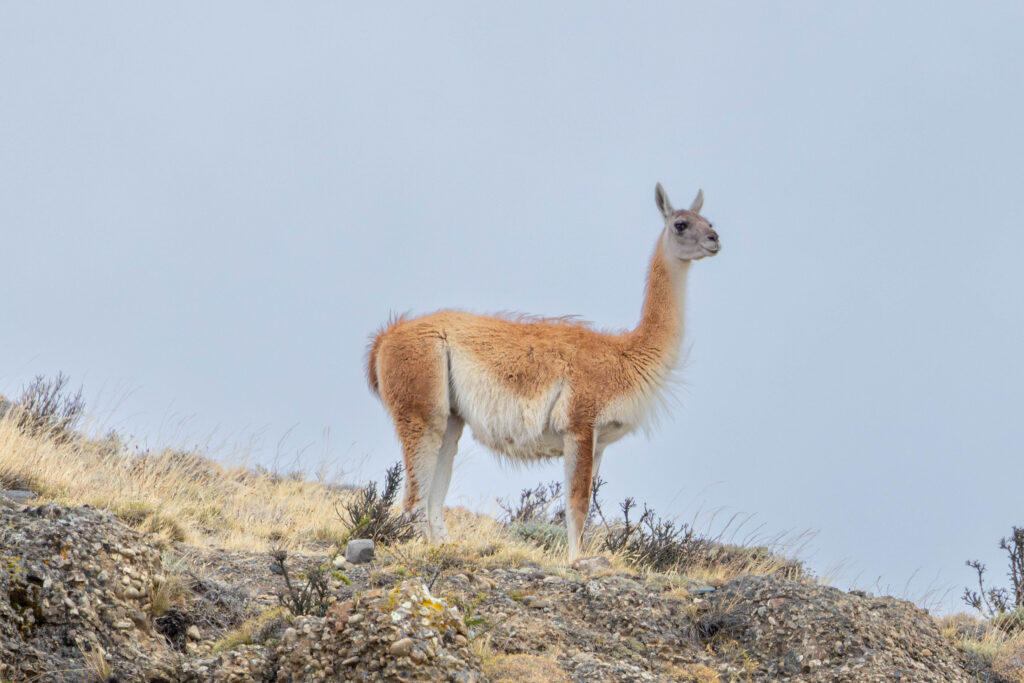
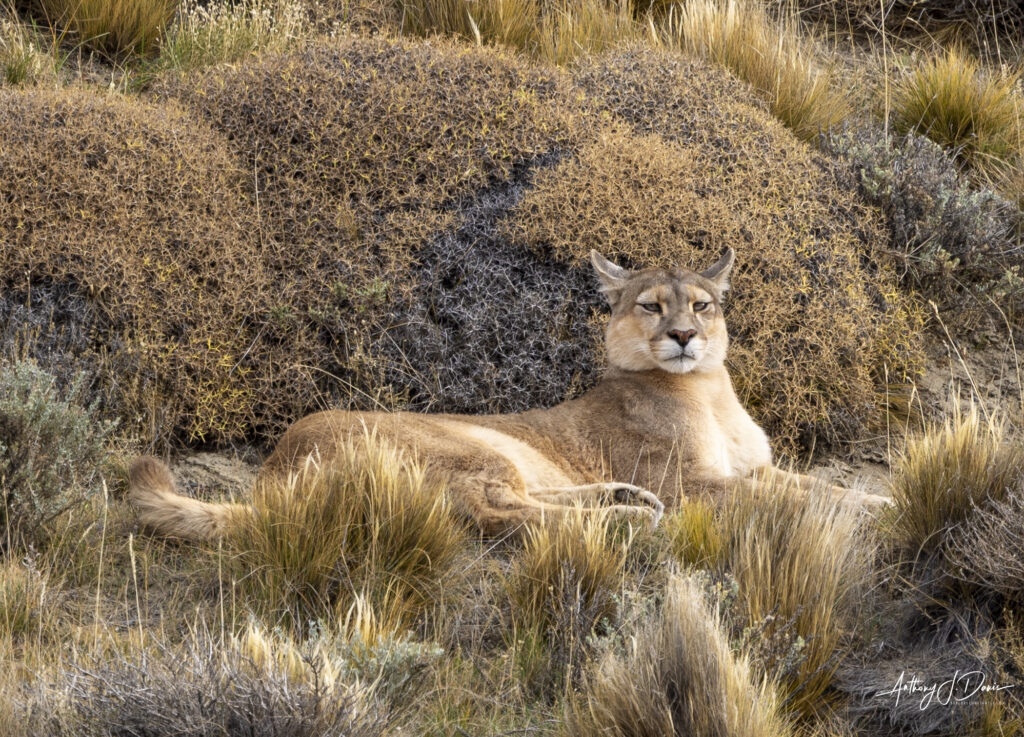
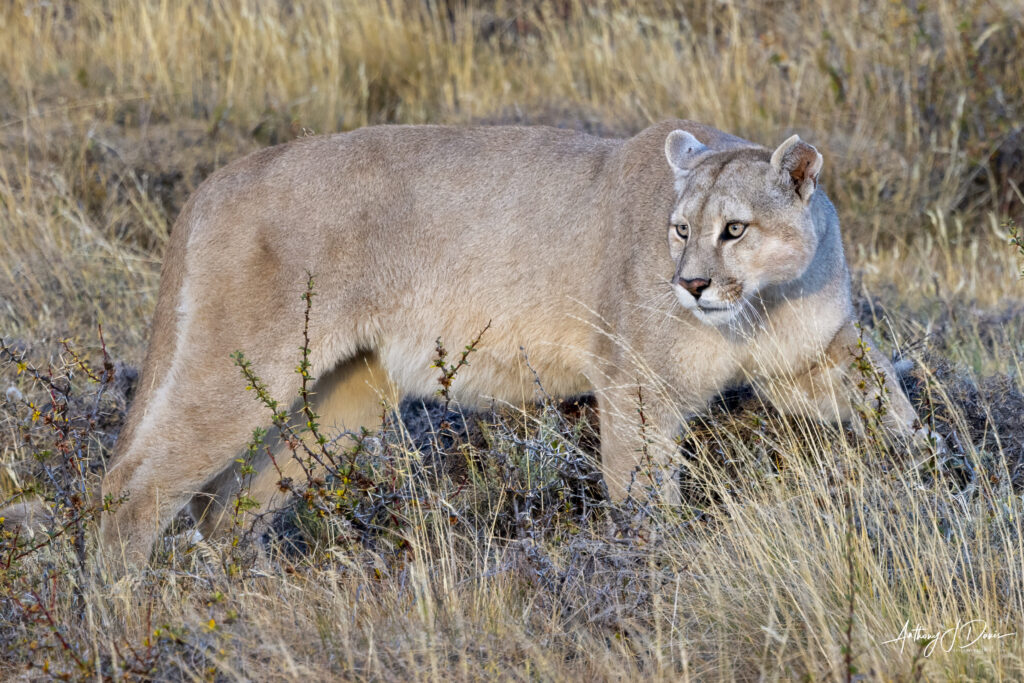

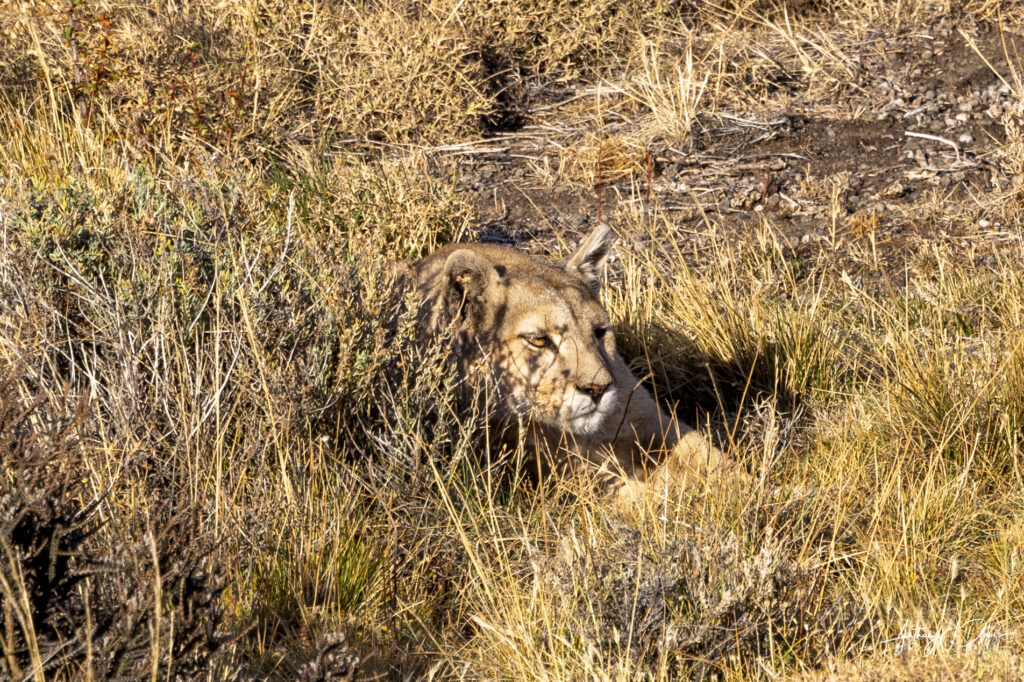
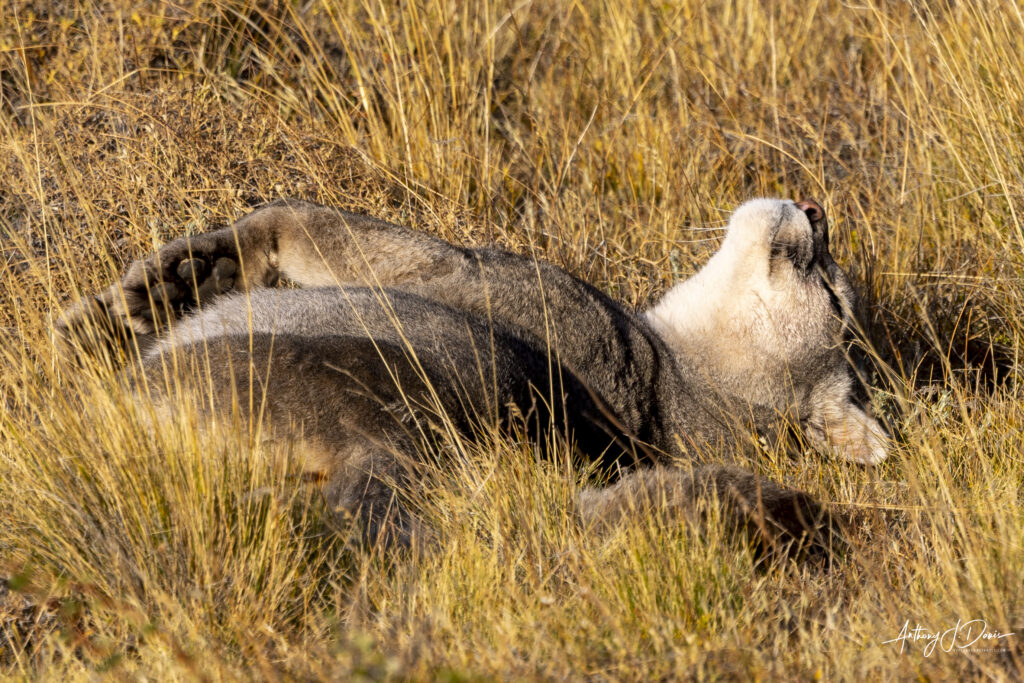
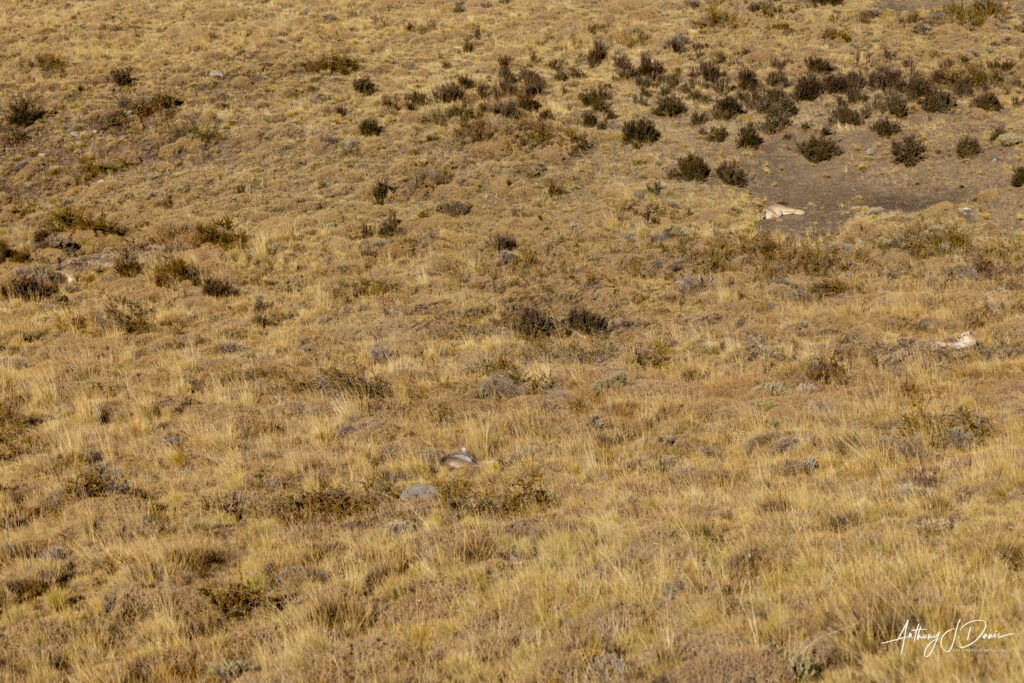


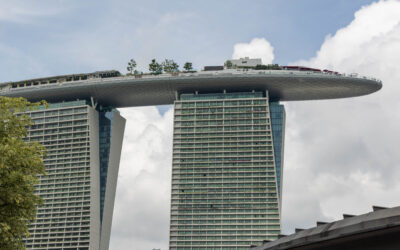
Fascinating!!! Great pictures and story!
What an exciting adventure! Beautiful pictures.